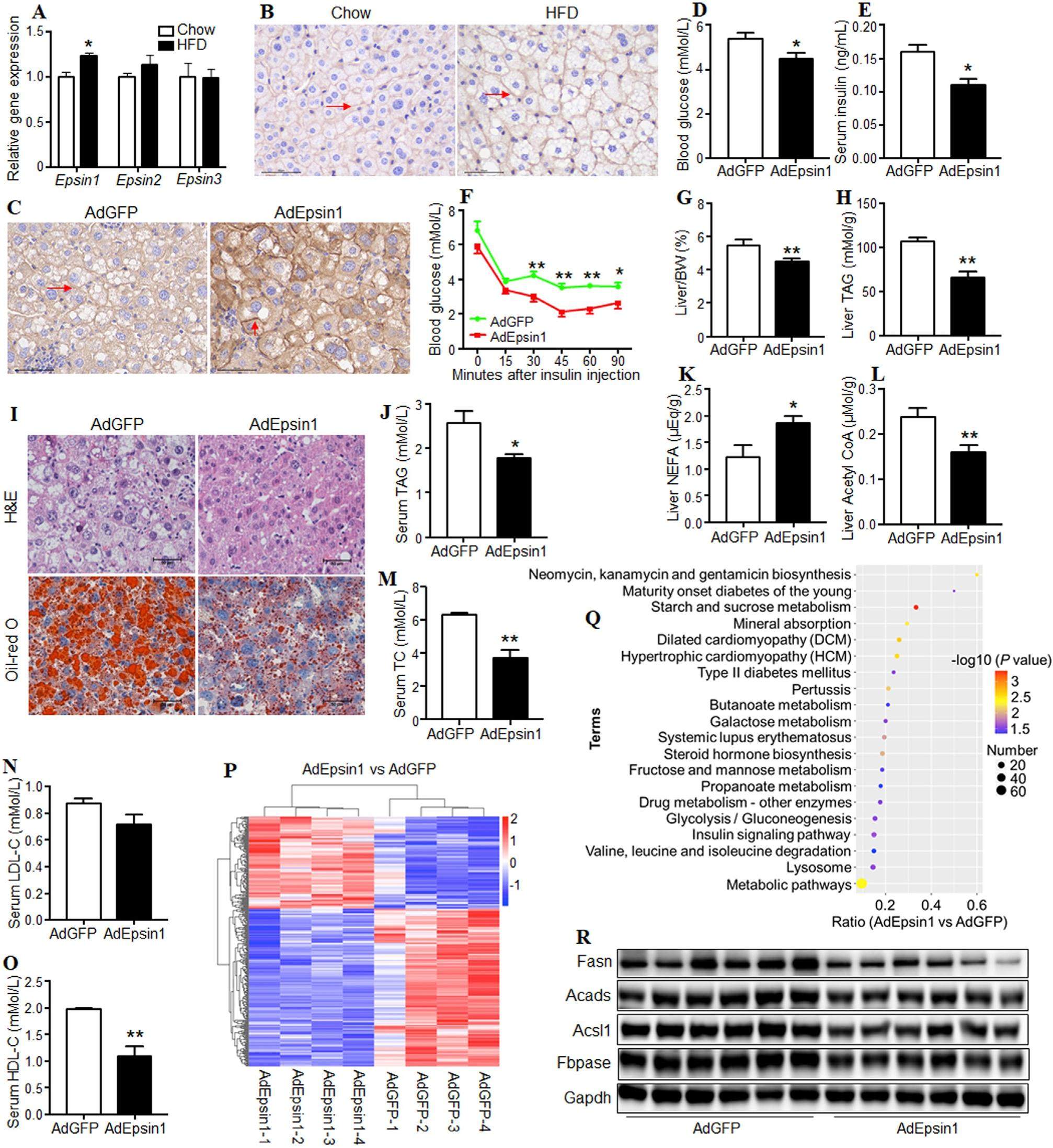
Identification of Epsin1 as a regulator for hepatic lipid and glucose metabolism


Obesity related non-alcoholic fatty liver disease (NAFLD), which can progress to steatohepatitis and insulin resistance, has become a major chronic liver disease worldwide. As an adaptor of clathrin-mediated endocytosis, Epsin1 plays a role in many diseases, including tumors, atherosclerosis and diabetic wound healing. Epsins contain a conserved NH2-terminal homology domain (ENTH), which binds to lipids on plasma membrane. Here, we investigated the role of Epsin1 in the regulation of hepatic lipid and glucose metabolism. Results showed that hepatic Epsin1 overexpression improved insulin tolerance test, and alleviated hepatic steatosis, hyperglycemia and hyperlipidemia in diet-induced obese (DIO) mice. Besides, Epsin1 overexpression reduced the expression of gluconeogenic genes, lipogenic genes, and increased lipolytic genes in the liver. Proteomic data indicated that Epsin1 overexpression reduced the levels of the proteins involved in lipid synthesis and gluconeogenesis.
